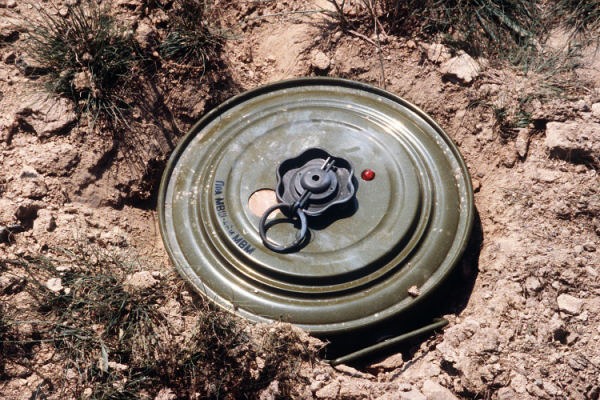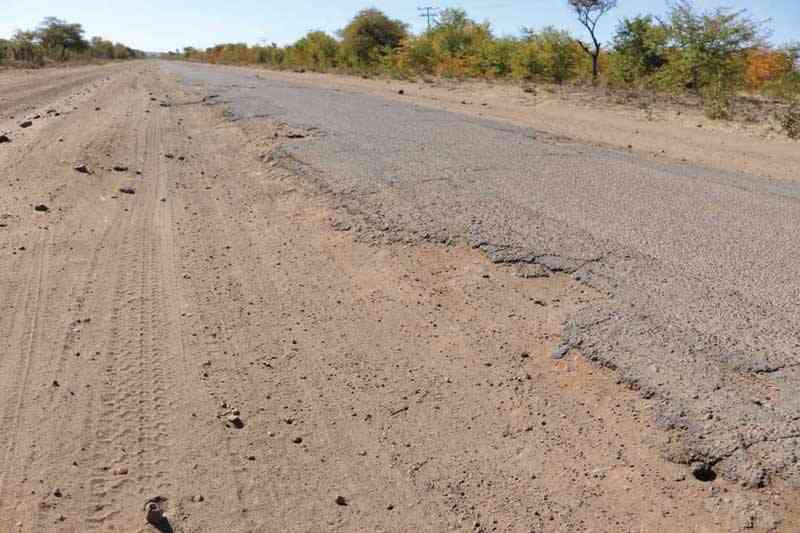
ON a blistering afternoon, with the blazing sun penetrating the terrain in Mukumbura, Mt Darwin North, Tawanda Mupfudza clears some land in preparation for the rainy season. Holding his axe tightly, he slowly encroaches into an area demarcated by a sign which reads: “Chenjera zvimbambaira/Beware of landmines”.
BY TINOTENDA MUNYUKWI
For a passer-by, the message is chilling, but for Mupfudza, the economic gains of taking such a risk far outweigh the need to be precautious and avoid danger.
For him and several other villagers, living in an area infested with landmines 37 years after independence has become normal.
Mt Darwin North is still infested with landmines planted by the Ian Smith regime at the height of the liberation war in the 1970s to barricade the country’s north-eastern border and prevent liberation war fighters from accessing the country from their training bases in Mozambique.
With the area’s growing population, untamed lands which the locals used to avoid — based on their liberation war knowledge — are now being cultivated, as people desperately seek to expand their fields into the newer fertile lands.
There are a few warning signs that were placed by the Rhodesian forces during the height of the struggle to caution the locals, but many of these have been eroded into invisibility with rust over the years.
As such, many villagers are now at risk with recurring cases of fatalities and injuries of both humans and livestock such as cattle and goats which constantly cross the minefields to reach water sources during dry seasons.
- Chamisa under fire over US$120K donation
- Mavhunga puts DeMbare into Chibuku quarterfinals
- Pension funds bet on Cabora Bassa oilfields
- Councils defy govt fire tender directive
Keep Reading
“We do know that these areas have landmines, but we have lived in this area for centuries, and we were there way before they placed them, therefore, there is nothing that can scare us, because at the end of the day, we want land to plough and our animals need grazing lands, our families are also expanding,” a resolute Mupfudza said.
Many of the villagers have relatives who reside just across the border in Mozambique and are forced to cross the minefields time and again in order to visit their loved ones.
Some settlements are directly adjacent to the minefields and for those with toddlers, it is difficult to control and curb their curiosity, as they seek to tamper with the dangerous explosives, should they come across one.
Although highly-dangerous, over the years the locals have mastered the art of navigating their way across the minefields, sticking to known paths and avoiding being shredded to death by the chancy explosives in the process.
When NewsDay visited Mukumbura, it witnessed school girls from Kapfudza Primary School crossing the minefield to fetch water for use, and making a trip back with buckets on their heads.
Hopefully all the horror will soon be a thing of the past, should efforts being put in Mt Darwin by a demining organisation, Halo Trust, yield the expected results.
Halo, which has been operating in the area since 2013, estimates about 60 square kilometres of minefield contamination is left across the whole country, with Mt Darwin and Rushinga making the list.
In the Mukumbura area, the minefields have dense patterns, with planted landmines spaced by barely a metre, some of them being the South African-made R2M2 which is rated among the world’s deadliest, capable of mincing an entire human being, once they step on it.
Halo acknowledges that human accidents have been relatively low compared to livestock, with 19 cattle blown up within a space of two months in Mukumbura alone, giving a clear reflection of the gravity of the problem across the whole country in landmine contaminated areas.
“People have tried to stick to paths, but the same cannot be said for animals as day in, day out, livestock is being lost, sometimes it will be searching for greener pastures from the land across the minefields,” Halo trust programmes manager, Tom Dibb said.
Zimbabwe has been making frantic efforts to meet the subsequent pledges it made after signing the Ottawa treaty of 1997 in which all signatories agreed to clear the world of landmines by 2025.
Along the north-eastern border, Halo has unearthed over 40 000 landmines since it began operations in 2013.
However, an estimated 85 000 people scattered along the border still live under threat when, just across the border in Mozambique, the country was declared landmine-free in 2015.
For Mt Darwin North Member of Parliament, Noveti Muponora, demining the area needs to be augmented with efforts to remedy the trail of damage left by the deadly weapons.
As such, plans have been set in motion to build memorial clinics across Mt Darwin North constituency to help the community lessen the effects of landmine blast injuries, however, the projects are being stalled by lack of funding.
“We have families who lost fathers, mothers and sisters and we also have some who lost their limbs and we are saying as we are removing the landmines, what then are we going to do about those families to soothe them as they move away from the landmine menace,” he said.
Further raising concern for Muponora is a myth that has since spread across his community, claiming that landmines contain red mercury, a priceless substance used in creating atomic bombs and, as such, people are risking their lives to try and dig up the dangerous explosives for economic gain.
“We have tried to raise awareness and we have organised the Muponora youth sports tournament in which we invite all these companies doing the demining activities and raise awareness, trying to save the lives of the many people who are being fleeced into these dangerous activities,” Muponora said.
It remains an unfulfilled dream for Mupfudza and the Mt Darwin community, to have their lands freed of landmines and until then, their lives are continuously threatened by these remnants of the erstwhile war of liberation.
To expedite the demining activities, government has engaged the international community, with some countries chipping in with considerable funding and to date, the Japanese government alone has donated $2 million to boost the activities along the north-eastern border.











